Jeff Burk March 06, 2023 Events
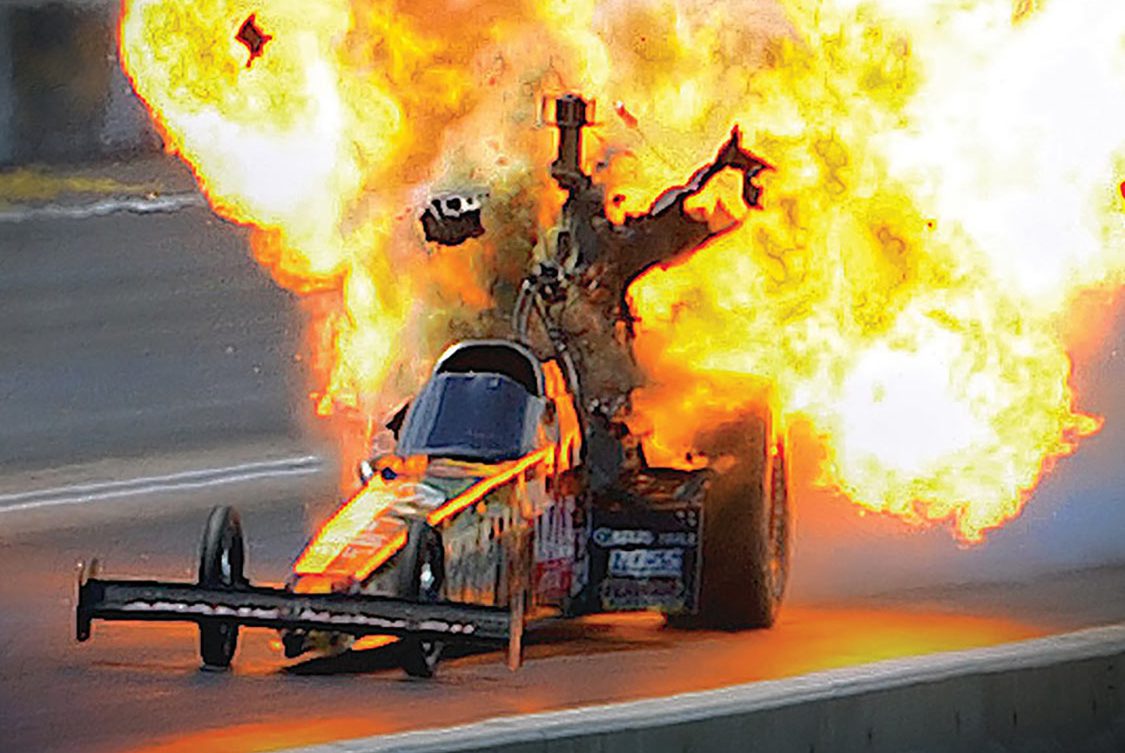
From its very beginning as a competitive motorsport, speed has always been the marquee attraction and the measure of greatness for its competitors in drag racing, for both the professional and sportsman classes. Speed was king and the champions were Top Fuel cars.
For the past 60 years, drag racers have expended most of their energy and money attempting to figure out how to develop more horsepower and make their cars faster than their competitors. Until the last 10 years or so, racers, especially professional racers, and fans regarded the most significant accomplishments in the history of the sport to speed.
The first 200-mph-plus quarter-mile laps in Funny Car, Top Fuel and Pro Stock are mega-historical in the minds of racers and fans. Chris Karamesines, Don Garlits, Gene Snow, Bill Kuhlmann and Warren Johnson are all hugely important, ground-breaking figures in drag racing because each broke major speed barriers at a time where being the fastest car in a pro class was often as important as a national event win.
For six decades, a nitro-burning Top Fuel car has generally held the title of fastest car in drag racing. Occasionally, at some national events, nitro Funny Cars would record Top Speed of the meet, besting dragsters for the title, but overall, it was the dragsters that went fastest.

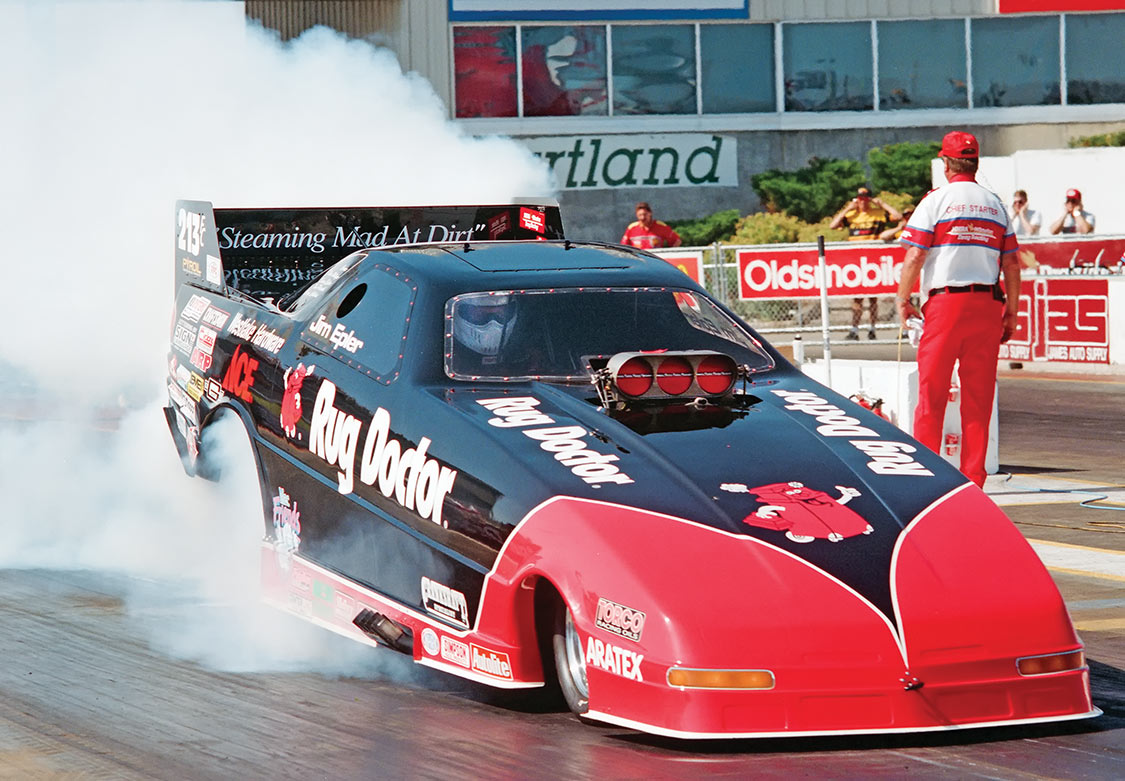
Last year, there was a historic shift in the drag racing scene that would have gone largely unnoticed had it not been for drag racing historian and announcer Bret Kepner. When DSR Funny Car driver Matt Hagan ran a record speed of 338.85 mph in May of last year, Kepner noted that not only was it the fastest FC speed in drag racing history, but also, it was faster than the 337.58 Top Fuel mark Tony Schumacher recorded in 2005 on the quarter-mile at Brainerd, Minnesota. Kepner noted that Hagan’s speed mark wiped away the last NHRA quarter-mile speed record that was faster than the current 1,000-foot speed records; his point being that quarter-mile records were no longer relevant to modern (post 2007) drag racing.
The fact is throughout the history of NHRA drag racing, beginning in 1965 when nitro Funny Cars came to be, that at almost any point through 2016 Top Fuel cars captured all of the major speed milestones before their Funny Car counterparts.
During the ’60s and ’70s, Top Fuel speed records were generally 15-20 mph faster than nitro Funny Cars. In those decades, Top Fuel dragster technology was far ahead of that of Funny Cars. Joe Amato developed a rear-wing combination and location that provided the dragsters much more downforce than their Funny Car compatriots. Generally, Top Fuel cars had the advantage of streamlining and more downforce, plus it didn’t hurt that at that time NHRA was still attempting to keep their Funny Cars at least resembling real cars and resisted almost any aero packages for them.
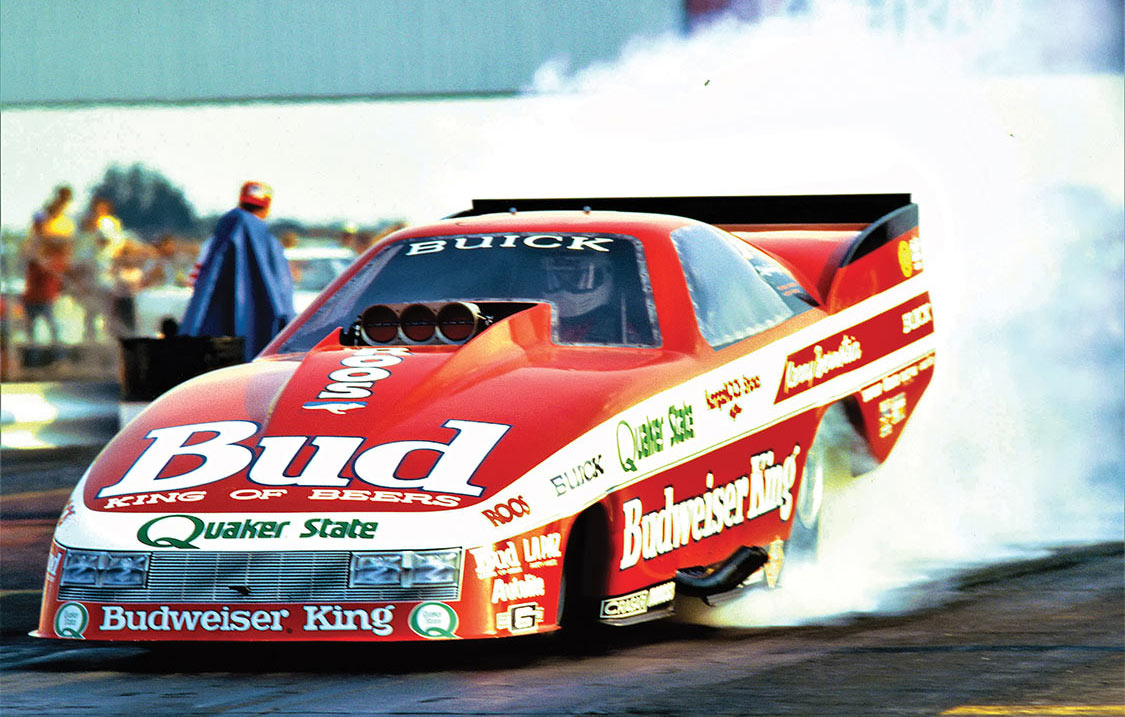
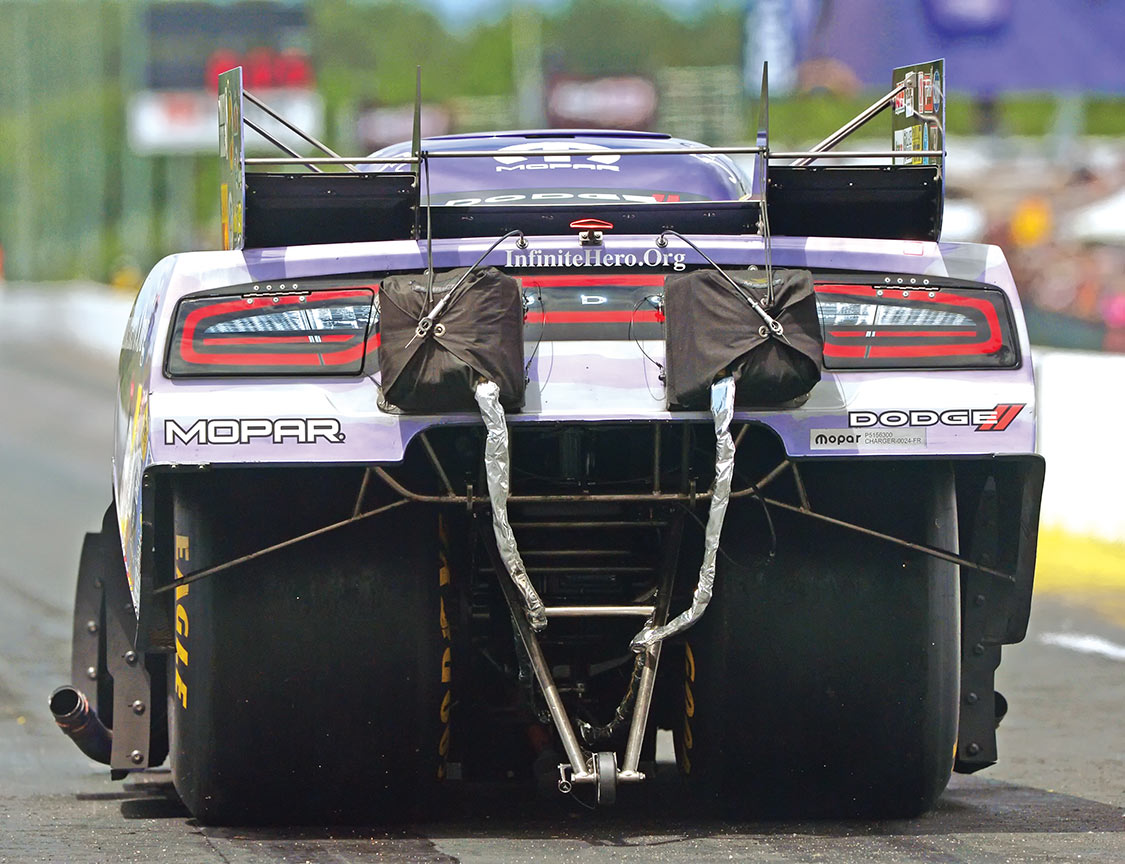
In the mid-’80s, nitro Funny Cars began catching up with Top Fuel cars in the speed category. For example, in September 1987, Joe Amato set the Top Fuel speed record at 280.98 mph. A month later, Mike Dunn reset the Funny Car speed record at 280.72.
This was a meaningful period in the sport for developing horsepower and taking advantage of the science of aerodynamics. Kenny Bernstein and his crew chief, Dale Armstrong, hired Bonneville racers, the Arivette brothers, to build a Buick FC body. What they created was unrecognizable as a Buick, pushing the aerodynamic rules of the day to the extreme. The press dubbed the car The Batmobile. The Top Fuel teams of the era made attempts to incorporate aero into their dragster designs with Gary Ormsby, Don Garlits and Gene Snow leading the program. Ormsby and Garlits had some success with streamliner bodies, but eventually, the bodies were deemed too heavy and lost favor. The only vestige of aero left in today’s Top Fuel cars is in the canopy cars of DSR.
The late-’80s and early-’90s represent a golden era of nitro performance, especially when it comes to big speed with the help of bigger fuel pumps, bigger and better superchargers, 44-amp magnetos and better tires. Bernstein and Don Prudhomme left FC and went Top Fuel racing. Top Fuelers were the kings of the sport.
It took Top Fuelers just five years to raise the speed record from 280 mph in 1987 to Bernstein’s dramatic 301.70 effort in 1992 at Gainesville. It took nitro coupes almost six years to break the 300-mph barrier.
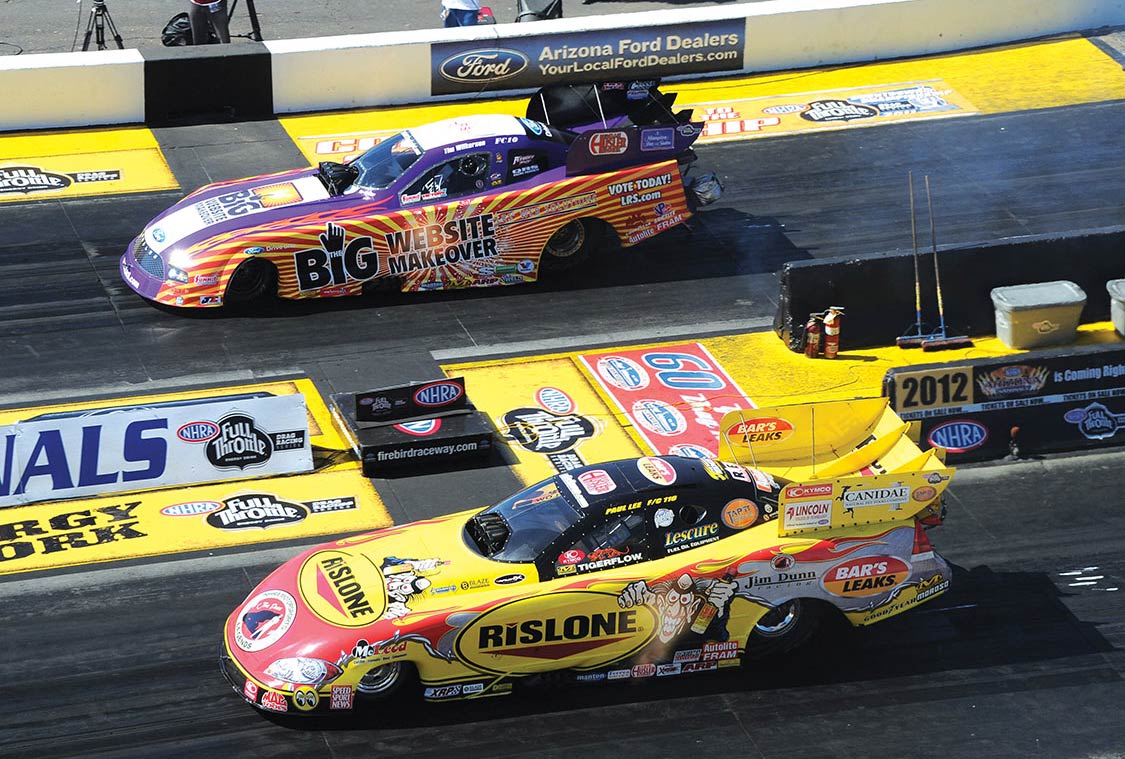
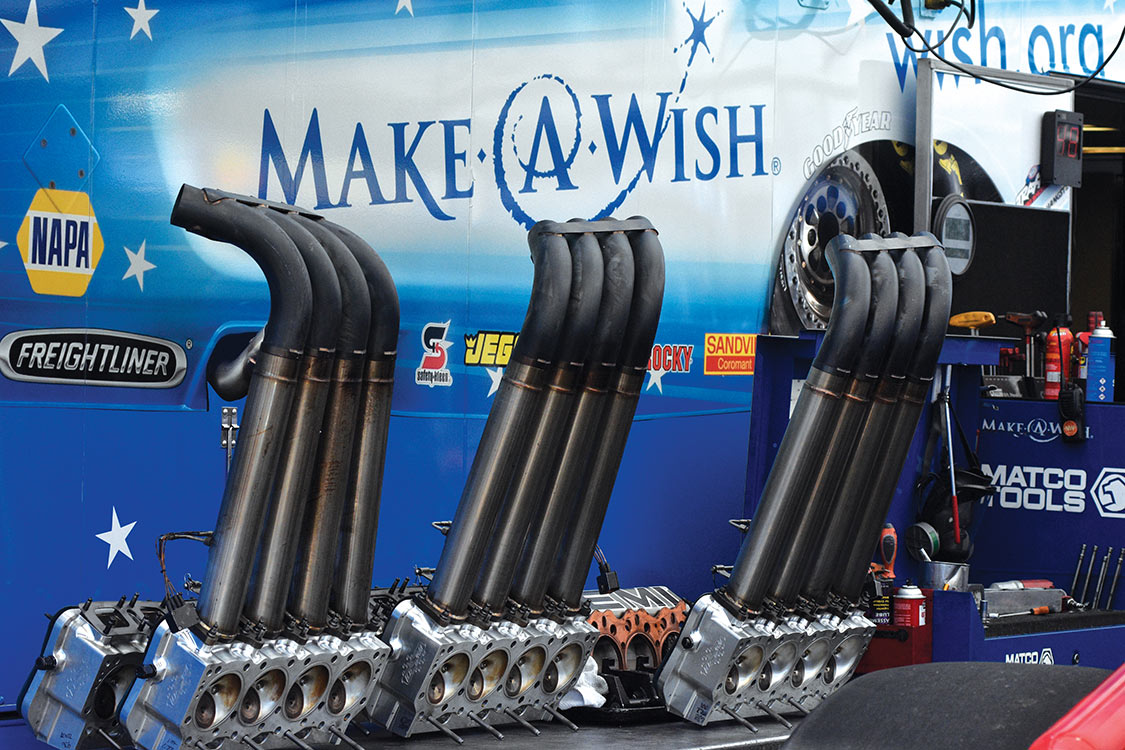
From the ’90s on, a combination of technological advances—including track prep, five-disc clutches and almost infinitely tuneable fuel systems—saw Top Fuel cars and tuners dominate the sport in terms of speed. By 1998, the NHRA quarter-mile Top Fuel speed record had increased by more than 25 mph to over 326, and by 2005, the NHRA speed record was 336.15, both set by Tony Schumacher, who also ran the fastest quarter-mile speed in history at 337.58. Funny Cars continued to trail dragsters as far as setting speed records. Funny Cars gained just 23 mph through 1998 and 33 mph through 2007.
Beginning in 2008, the landscape in NHRA’s Top Fuel and Funny Car classes saw massive changes. The tragic death of Scott Kalitta directly caused the NHRA to shorten the track length for nitro cars from 1,320 feet to 1,000 feet. Additionally, the NHRA mandated safety rules changes that added considerable weight to both classes (currently the minimum weight for Funny Cars is 2,565 pounds, and 2,320 pounds for dragsters). Nonetheless, fuel dragsters remained quicker and marginally faster than fuel coupes through 2015. At the end of the 2015 season, the NHRA Funny Car speed record of 331.45 was just 1-mph slower than the Top Fuel mark of 332.75.
Beginning in 2016, Funny Car teams improved the performance of their fuel coupes, while Top Fuel cars and teams basically maintained the status quo. Funny Cars set Top Speed for nitro cars at 17 of 24 NHRA national events. Despite the trend, Top Fuelers could still claim the fastest speed recorded at an NHRA national event until the middle of 2017 when Matt Hagan ran 338.85 at Topeka, Kansas. That speed eclipsed the all-time speed record for NHRA nitro cars of 337.58, a speed recorded 12 years prior in 2005 by Tony Schumacher driving a dragster on the quarter-mile at Brainerd, Minnesota.
Hagan’s record-breaking pass was even more impressive for several reasons: He only had a 1,000-foot track; he drove a nitro Funny Car; and the Funny Car minimum weight is at least 200 pounds heavier than a dragster.
In 2017, the trend of nitro Funnies being the fastest cars in automobile racing (excluding land speed competition) has continued. So far this season, Funny Cars have had Top Speed at every race.
So the question is: how did the Top Fuelers, the former kings of speed, get dethroned?
It would appear that a combination of favorable rules for and technical advances by the nitro coupe tuners and crew chiefs have contributed to their speed advantage. The single most important factor may be that rev limiters are set to allow Funny Cars to rev their engines 200 more rpm than dragsters. Given that there is an NHRA-mandated gear ratio number for both Top Fuel and Funny Cars, any way you do the math the Funny Cars should be faster.
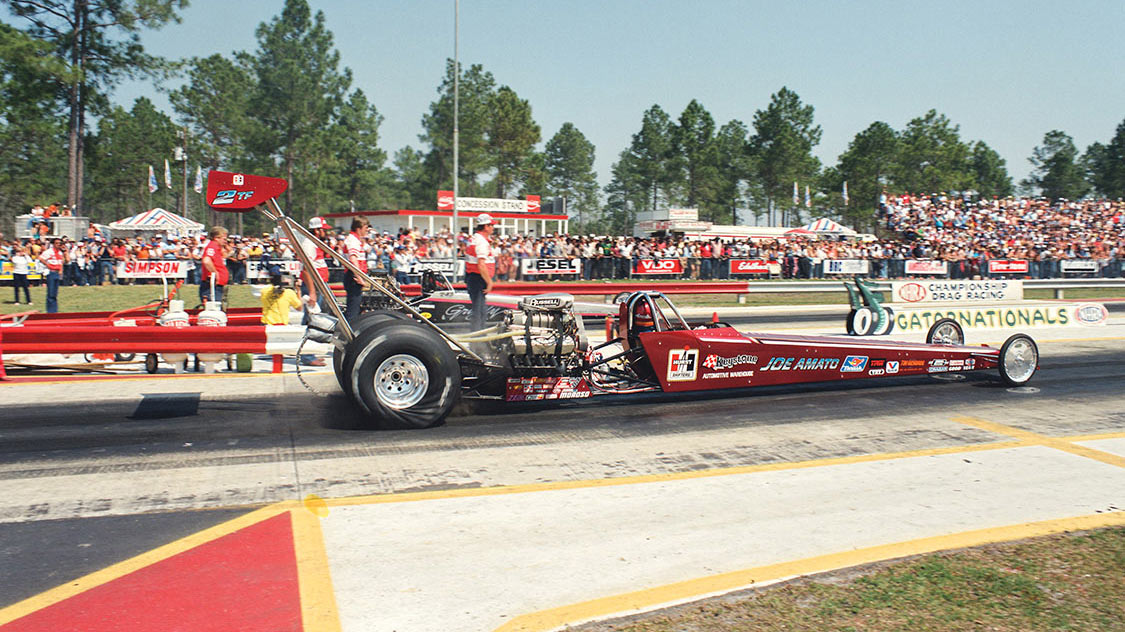
It also appears that Funny Cars have an inherent aero advantage over dragsters. Today’s Funny Car bodies are the result of hundreds, if not thousands, of hours of wind tunnel testing time at Ford, GM and Mopar. Current Funny Car bodies resemble GTP cars running at LeMans or Daytona. If it weren’t for the logos, most fans wouldn’t know a Mustang FC from a Chevy, Dodge or a Toyota. Today’s Funny Car bodies have the outline of a wedge. The current bodies are aerodynamically slicker and make more downforce than at any time in the history of the class. Also, Funny Cars were especially helped by a new tire that Goodyear introduced approximately two years ago, and many teams say they are much less likely to lose traction than with Goodyear’s previous offering.
If you look at two- or three-year-old photos of Funny Car rear spoilers, you will notice the old dump-truck-bed-style spoilers on the back of the cars. The rear spoiler plate was as tall as the side spoilers that supported it. It was very efficient in creating a lot of downforce and even more aero drag that strained engines and parts.
Now, thanks apparently in part to tires that hook better, Funny Cars don’t require as much downforce as they once did. For the last couple of years, crew chiefs have been making the rear spoiler plate shorter and narrower. In recent years, alcohol Funny Car and Pro Stock teams have all but eliminated rear deck spoilers because the cars go faster without them, as do nitro Funny Cars.
To add insult to injury, the NHRA allowed Funny Car teams to build the famous laid-back headers. Those headers did a couple of things for Funny Cars: They provided thrust that improved 60-foot times, and they added horsepower. Unfortunately for the Top Fuel dragsters, laid-back headers evidently aren’t an option, and as far as I can determine, none of the premier Top Fuel teams use them.
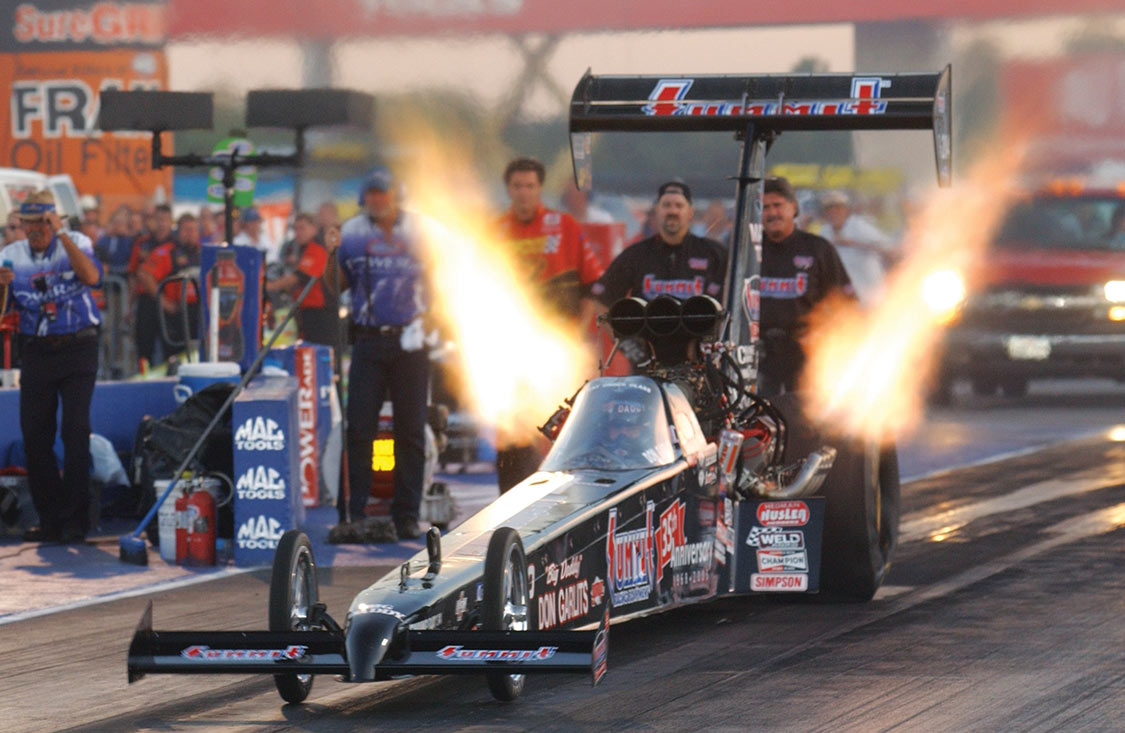
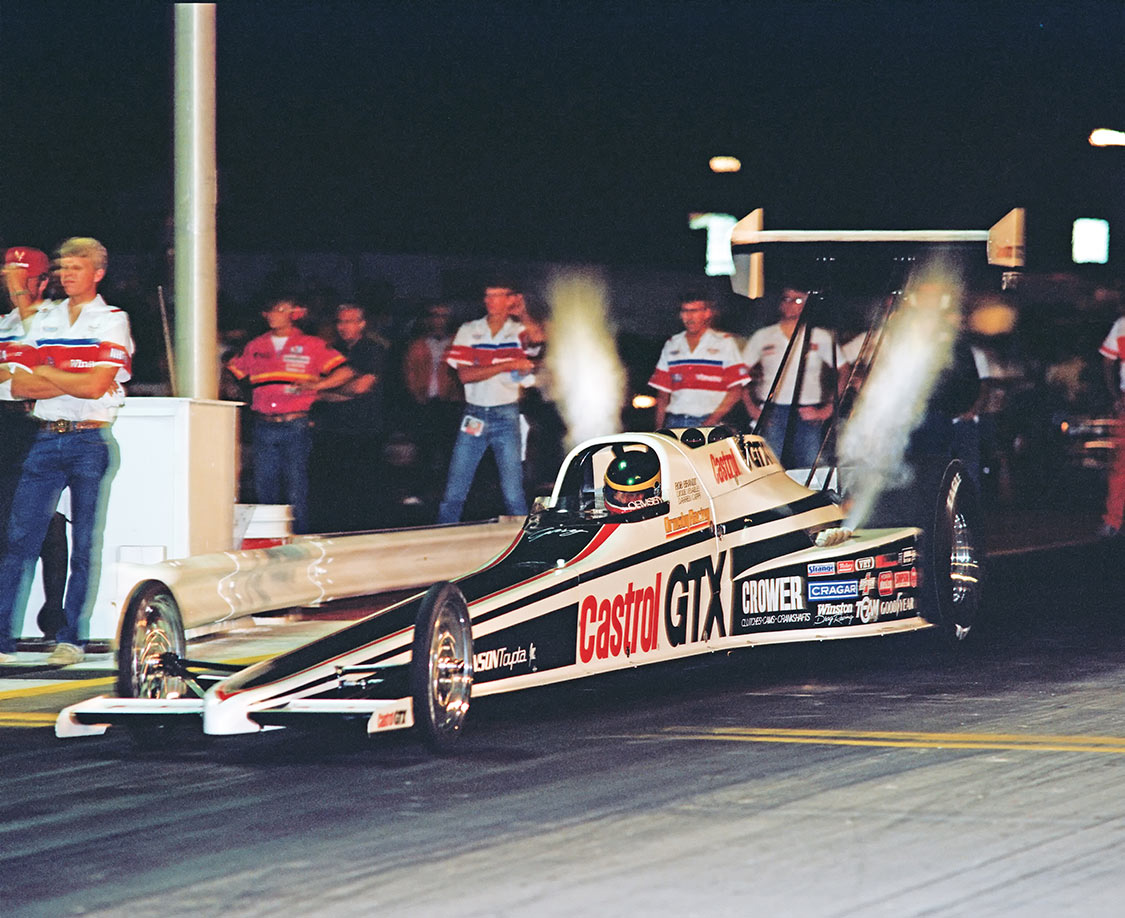
The last real innovation in Top Fuel aero tech was the streamliners built by Gary Ormsby and Don Garlits. They drove those cars to records and race wins, but they were eventually replaced with lighter conventional dragsters. The NHRA even made sure that when Don Schumacher Racing put enclosed canopies on its dragsters, they didn’t gain any advantage through their use.
Unless NHRA does something to allow dragsters to attain greater speeds—and there doesn’t appear to be a good reason to do so since the policy is setting a speed record in the nitro classes means nothing other than bragging rights for the team—dragsters’ performances will not improve significantly. It’s reasonable to make a case that nitro Funny Cars have benefited much more from technical advances that they can actually use than have Top Fuel Dragster teams. No one should be surprised that Funny Cars are consistently faster than dragsters, and this fact isn’t likely to change in the foreseeable future.
Update: On July 28, 2017 Robert HIght/Jimmy Prock ran the fastest speed in NHRA history—339.87!